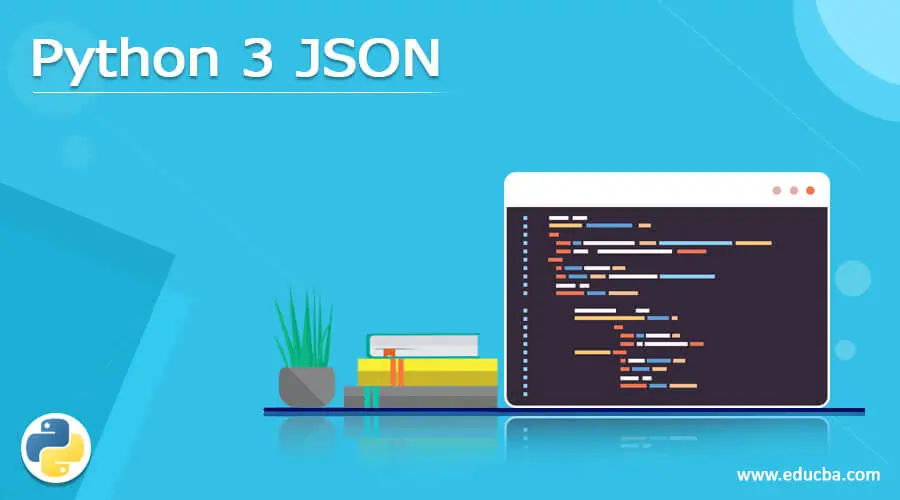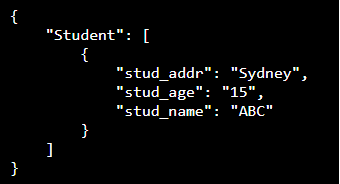Updated March 30, 2023
Definition on Python 3 JSON
Python 3 JSON is a data-storage and-exchange format. It is a text format that is authored in JavaScript object notation. Python 3 JSON data can be worked with using Python’s built-in library JSON. It is a widely used data format for encoding structured data. The JSON format is commonly used to send the data to the server after sending it will send acknowledge to a web application.
What is python 3 JSON?
- It is a string in Python. JavaScript Object Notation is its full name. It means that the data is stored and transferred using a file that was executable made up of text written in a computer language.
- Python has a built-in library called JSON that allows us to work with JSON data. The JSON package must be imported into the Python script in order to use this capability.
- In JSON, the text is represented by a quoted string, which basically contains the value in the key-value mapping. In Python, it’s comparable to the dictionary.
- JSON has a comparable API to the marshal modules in the Standard Library, and JSON is supported natively in Python.
- JSON is a data organizing format used by Python 3. It’s mostly utilized for data storage and transport between our server and browser. Python has a built-in module named json that handles JSON.
- This package contains all of the tools needed to work with JSON Objects, including parsing, serializing, and deserializing.
- Serialization is the term used to describe the encoding process. For storage or transmission across a network is referred to as serialization. To handle data flow in a file, Python’s JSON module employs the dump method to convert objects of python into corresponding JSON objects, making it simple to send data to files.
- Deserialization is the inverse of Serialization, and it involves converting JSON objects into Python objects. It’s done with the load method. If we got data that contains JSON format from another application or got it in a string format, we can quickly deserialize it with the load method, which is typically we are loading it by using strings.
- In computer science, the key-value pair’s map is analogous to JSON’s natural format. Because a dictionary in Python is essentially a map implementation, we’ll be able to correctly represent JSON using a dict. Other arrays and other primitive types like integers and strings can all be found in a dictionary.
- Converting dictionary and JSON is easy with the built-in JSON package, which has various handy functions.
- Serialization is the method for translating python to JSON. The term serialization refers to the process of converting data into a sequence of bytes for storage.
- Because JSON may be read by other languages, Python-specific objects are transformed to a standard JSON format. When storing data in JSON format, for example, tuple and list is python specific and are converted to arrays.
How to use python 3 JSON?
- We can use the JSON dump and JSON dumps functions. The distinction between the two is that JSON dumps convert a dict to a string format, which JSON dump can save in JSON on disc.
- Json dump and JSON dumps functions require input as a dictionary. We can send it to another service to be deserialized or store it once it’s serialized.
- We can open files and write down this JSON text. We can skip the dumps method and use the dump method instead if we don’t wish to save the data in an independent variable for later usage.
The below step shows how to use python 3 JSON are as follows.
1) To use JSON in python 3 first we need to import json in our code. We are importing JSON in the first line of code. The below example shows how we can import JSON on our code are as follows.
import json2) To encode and decoding of data, we need to install demjson package in our system.
Code:
pip install demjson3) We can parse the JSON string by using the load method. We can convert the string from JSON to python. The below example shows converting the string into python are as follows.
Code:
import json
p = '{ "stud_name" : "ABC", "stud_age" : 10, "stud_addr" : "New York"}'
q = json.loads (p)
print (q ["stud_name"])
print (q ["stud_age"])
print (q ["stud_addr"])4) We can use JSON dumps in python 3, we can use the sort keys option to accomplish the order. In the below example, we are using JSON dump to show the accomplished ordering are as follows.
Code:
import json
stud_data = {'Student':[{'stud_name' : 'ABC', 'stud_age' : '15', 'stud_addr' : 'Sydney'}]}
print (json.dumps (stud_data, sort_keys = True, indent = 4))Types of python 3 JSON
- We might need to print JSON data in a more legible format to analyze and debug it. This can be accomplished by using the JSON dumps and JSON dump methods with the additional options indent and sort keys.
- In computer science key-value pairs is analogous. Because a dictionary in Python is essentially a map implementation, we’ll be able to correctly represent JSON using a dict.
Below are the different types which is as follows.
1) Dict
2) List
3) Tuple
4) Int
5) Long
6) Float
7) True
8) False
9) None
10) Str
The below example shows types in python 3 JSON are as follows. In the below example, we are using all the types of python 3 JSON.
Code:
import json
p = {
"stud_name": "ABC",
"stud_age": 10,
"pass": True,
"failed": False,
"Stud_addr": ("Sydney"),
"subject": [
{"subject": "English", "math": 2},
]
}
q = json.dumps(p)
print (q)- We can convert the string from python string to JSON. The below example shows converting the string into JSON.
Code:
import json
p = {
"stud_name" : "ABC",
"stud_age" : 15,
"stud_addr" : "New York"
}
q = json.dumps (p)
print (q)Conclusion
Python has a built-in library called JSON that allows us to work with JSON data. JSON package must be imported into Python script in order to use this capability. Python 3 JSON is the data-storage and-exchange format. Python JSON is a text format that is authored in JavaScript object notation.
Recommended Articles
This is a guide to Python 3 JSON. Here we discuss the definition, What is python 3 JSON, How to use python 3 JSON?, types, Examples with code implementation. You may also have a look at the following articles to learn more –







